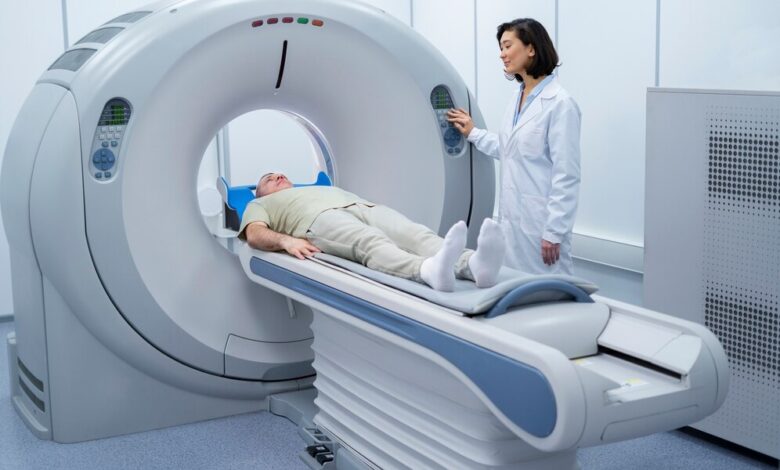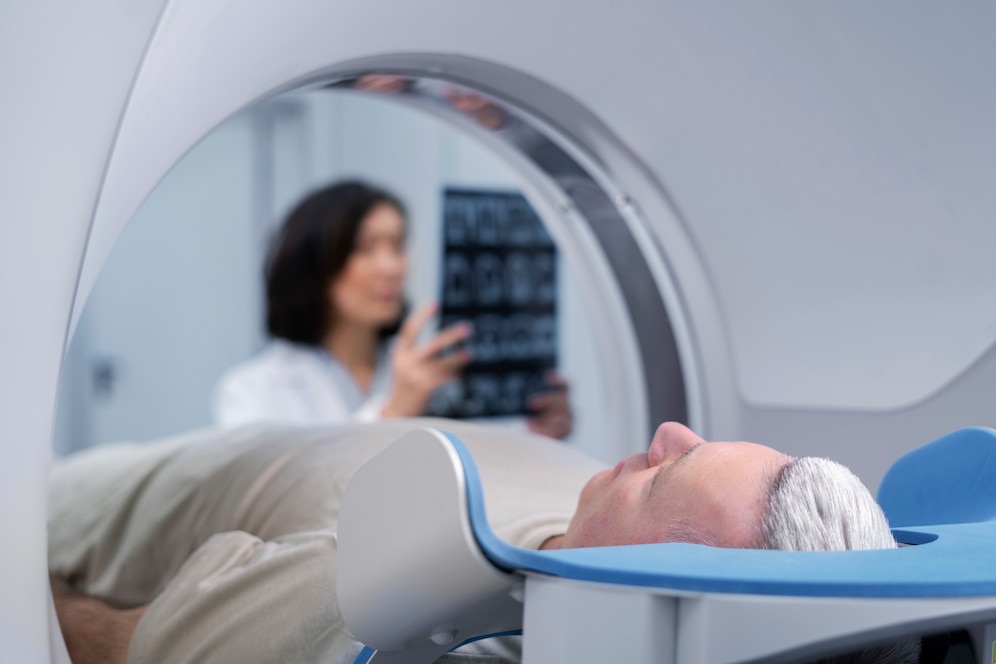The Role of Mammography Technologists in Modern Healthcare: A Comprehensive Guide

Mammography technologists, often referred to as mammo techs, play a critical role in the early detection and diagnosis of breast cancer. As specialized radiologic technologists, they are trained to operate mammography equipment, perform breast imaging procedures, and work closely with radiologists to ensure accurate results. With breast cancer being one of the most common cancers worldwide, the work of mammo techs is vital in saving lives through early detection. This article delves into the responsibilities, skills, and challenges faced by mammography technologists, while also addressing frequently asked questions about this essential healthcare profession.
What is a Mammography Technologist?
A mammography technologist is a healthcare professional who specializes in performing mammograms, which are X-ray images of the breast used to detect early signs of cancer. These technologists are trained to position patients correctly, operate sophisticated imaging equipment, and ensure that the images produced are of high quality for accurate diagnosis. They work in hospitals, diagnostic imaging centers, and outpatient clinics, often collaborating with radiologists and other healthcare providers.
Mammo techs must be certified and licensed, which typically requires completing an accredited radiologic technology program, gaining hands-on experience, and passing a certification exam. Their role is not only technical but also involves providing emotional support to patients, many of whom may be anxious about the procedure or potential results.
Key Responsibilities of a Mammography Technologist
The primary responsibility of a mammography technologist is to perform mammograms, but their duties extend far beyond this. They are responsible for preparing patients for the procedure, explaining the process, and ensuring their comfort throughout. This includes positioning the patient’s breast correctly on the imaging plate and adjusting the equipment to obtain clear images.
Mammo techs also play a crucial role in maintaining patient records and ensuring that images are properly labeled and stored. They must adhere to strict safety protocols to minimize radiation exposure and ensure the accuracy of the results. Additionally, they may assist radiologists in analyzing images and preparing reports.
Another important aspect of their job is staying up-to-date with advancements in mammography technology and techniques. This requires ongoing education and training to ensure they are providing the highest standard of care.
Skills Required to Excel as a Mammography Technologist
To be successful in this field, mammography technologists need a combination of technical, interpersonal, and problem-solving skills. Technical proficiency is essential, as they must operate complex imaging equipment and troubleshoot any issues that arise. Attention to detail is critical to ensure that images are clear and free from artifacts that could affect diagnosis.
Interpersonal skills are equally important, as mammo techs interact with patients who may be nervous or fearful. Empathy, patience, and the ability to communicate clearly are vital to helping patients feel at ease. Additionally, mammo techs must be able to work effectively as part of a healthcare team, collaborating with radiologists, nurses, and other professionals.
Problem-solving skills are also necessary, as technologists may encounter challenges such as difficult-to-position patients or equipment malfunctions. The ability to think critically and adapt to changing situations is key to overcoming these obstacles.
Challenges Faced by Mammography Technologists
While the role of a mammography technologist is rewarding, it is not without its challenges. One of the most significant challenges is the emotional toll of working with patients who may be facing a cancer diagnosis. Mammo techs must balance their professional responsibilities with the need to provide emotional support, which can be emotionally draining.
Another challenge is the physical demands of the job. Mammo techs often spend long hours on their feet and may need to assist patients with limited mobility. Repetitive motions, such as positioning patients and adjusting equipment, can also lead to strain or injury over time.
Additionally, staying current with advancements in technology and techniques requires a commitment to ongoing education. This can be time-consuming and may require balancing work with additional training or coursework.
The Importance of Mammography in Early Cancer Detection
Mammography is one of the most effective tools for the early detection of breast cancer, which is crucial for improving treatment outcomes and survival rates. Regular mammograms can detect tumors that are too small to be felt during a physical exam, allowing for earlier intervention.
Mammo techs play a vital role in this process by ensuring that high-quality images are obtained. Their expertise helps radiologists identify abnormalities that may indicate cancer, even in its earliest stages. This early detection can make a significant difference in a patient’s prognosis and quality of life.
Advancements in Mammography Technology
The field of mammography has seen significant advancements in recent years, thanks to innovations in imaging technology. Digital mammography, for example, has largely replaced traditional film-based methods, offering higher resolution images and the ability to enhance and manipulate images for better analysis.
3D mammography, also known as tomosynthesis, is another groundbreaking development. This technique creates a three-dimensional image of the breast, allowing radiologists to examine tissue layer by layer. This reduces the likelihood of false positives and improves the detection of small tumors that may be missed in traditional 2D mammograms.
Mammo techs must stay informed about these advancements and receive training on new equipment and techniques. This ensures that they can provide the best possible care to their patients.
The Future of Mammography and the Role of Mammo Techs
As technology continues to evolve, the role of mammography technologists is likely to expand. Artificial intelligence (AI) is beginning to play a role in mammography, with algorithms being developed to assist in the detection of abnormalities. While AI has the potential to enhance the accuracy and efficiency of mammograms, it is not expected to replace the need for skilled mammo techs. Instead, technologists will work alongside AI tools to provide even more precise and reliable results.
Another area of growth is the increasing emphasis on personalized medicine. Mammo techs may play a role in tailoring screening protocols to individual patients based on their risk factors, such as family history or genetic predisposition. This personalized approach has the potential to improve outcomes and reduce unnecessary screenings.

Conclusion
Mammography technologists are unsung heroes in the fight against breast cancer. Their expertise, compassion, and dedication are essential to the early detection and diagnosis of this devastating disease. As technology continues to advance, the role of mammo techs will evolve, but their importance in providing high-quality patient care will remain constant.
For those considering a career in this field, becoming a mammography technologist offers the opportunity to make a meaningful difference in the lives of patients. It is a challenging yet rewarding profession that combines technical skill with human connection.
Frequently Asked Questions (FAQs)
1. What qualifications are needed to become a mammography technologist?
To become a mammography technologist, you must first complete an accredited radiologic technology program and obtain certification as a radiologic technologist. After gaining experience in the field, you can pursue additional training and certification specifically in mammography. Most employers require certification from organizations such as the American Registry of Radiologic Technologists (ARRT).
2. How long does it take to become a mammography technologist?
The path to becoming a mammography technologist typically takes 2-4 years. This includes completing an associate degree in radiologic technology, gaining clinical experience, and obtaining certification. Additional training in mammography may take several months to a year.
3. What is the difference between 2D and 3D mammography?
2D mammography creates a flat, two-dimensional image of the breast, while 3D mammography (tomosynthesis) produces a three-dimensional image by capturing multiple layers of breast tissue. 3D mammography is more effective at detecting small tumors and reducing false positives.
4. Is mammography safe?
Yes, mammography is considered safe. The amount of radiation used in a mammogram is very low and is carefully controlled to minimize exposure. The benefits of early cancer detection far outweigh the risks associated with radiation.
5. How often should women get mammograms?
The frequency of mammograms depends on factors such as age, family history, and personal risk factors. Generally, women aged 40 and older are advised to have a mammogram every 1-2 years. However, it is important to consult with a healthcare provider to determine the best screening schedule for your individual needs.
6. What should I expect during a mammogram?
During a mammogram, you will stand in front of a mammography machine, and the technologist will position your breast on a flat plate. Another plate will gently compress the breast to spread out the tissue and obtain a clear image. The process may cause some discomfort, but it is usually brief.
7. Can men undergo mammograms?
Yes, men can undergo mammograms if they have symptoms such as a lump or pain in the breast. While breast cancer is much less common in men, it can still occur, and mammography may be used as a diagnostic tool.
8. What is the job outlook for mammography technologists?
The job outlook for mammography technologists is positive, with demand expected to grow as the population ages and the need for breast cancer screening increases. Advances in technology and personalized medicine are also likely to create new opportunities in the field.